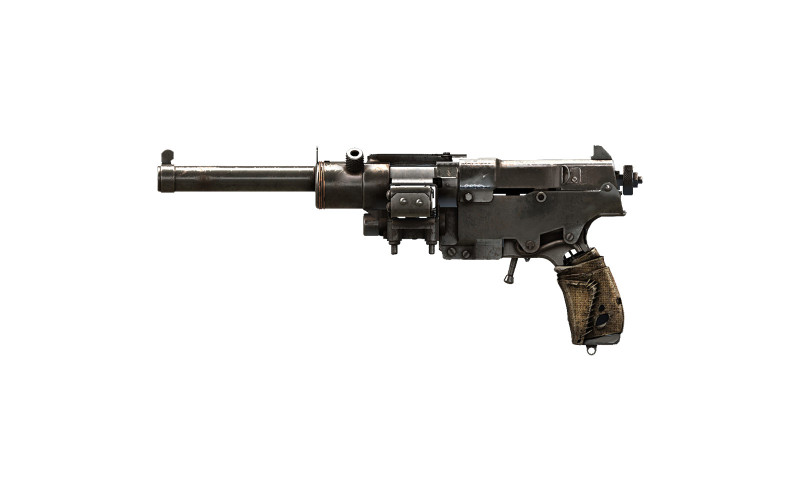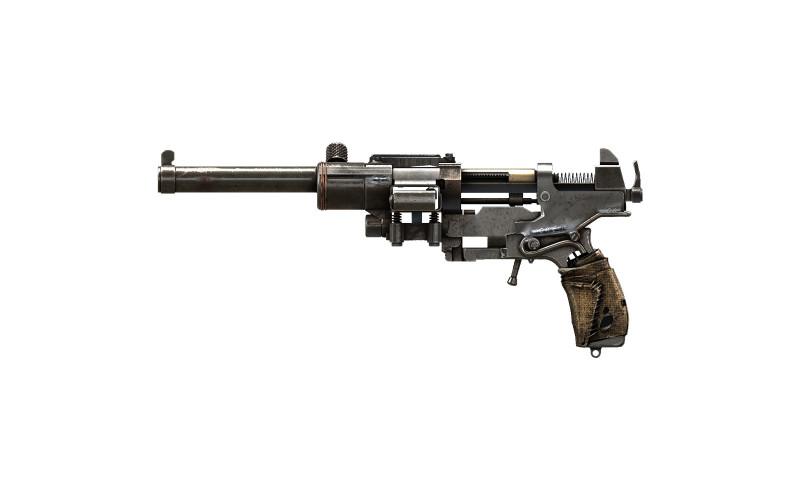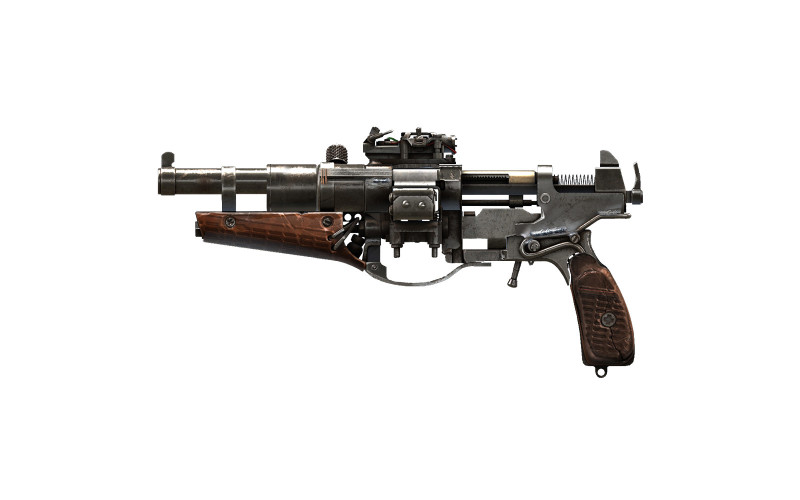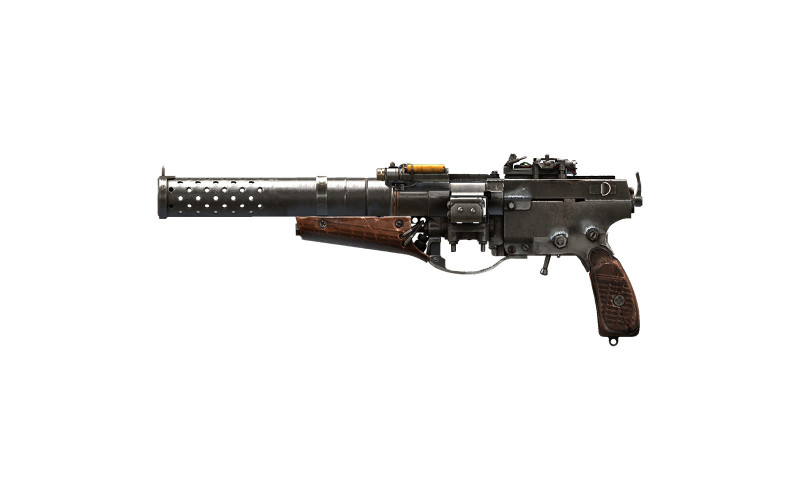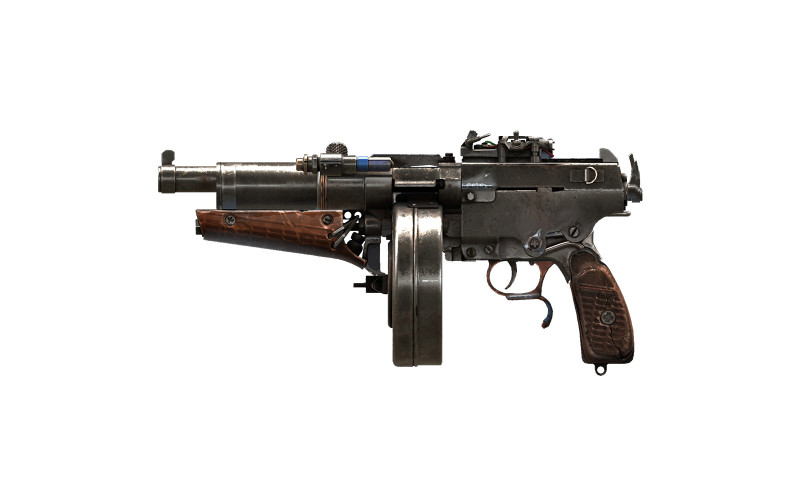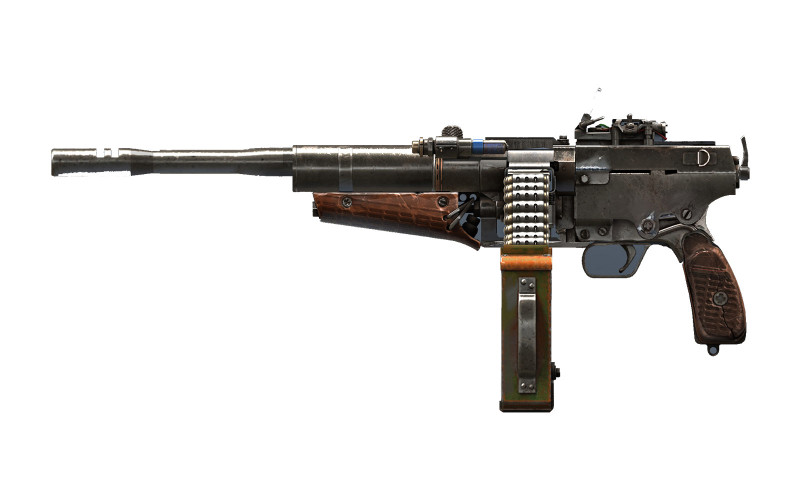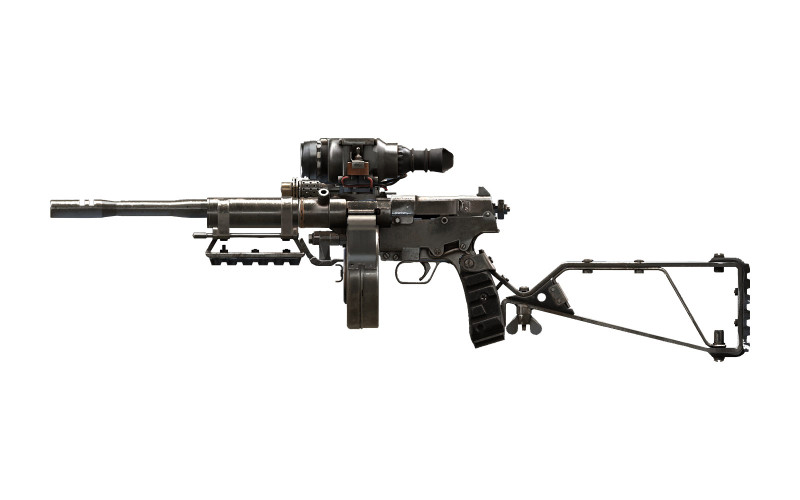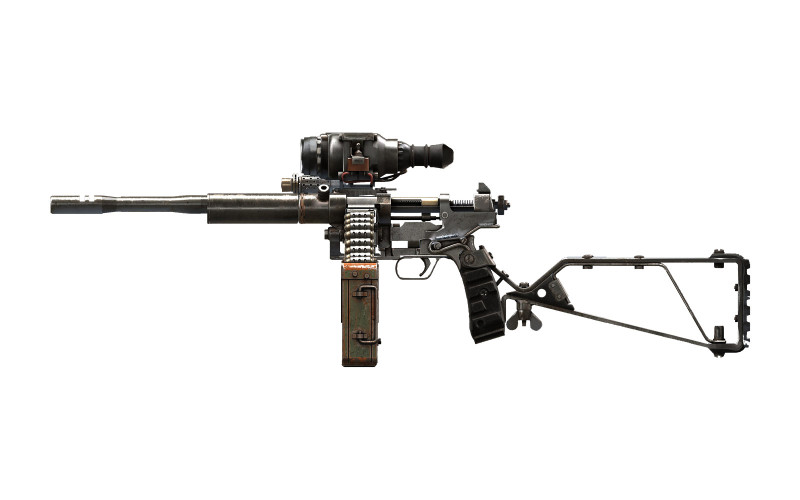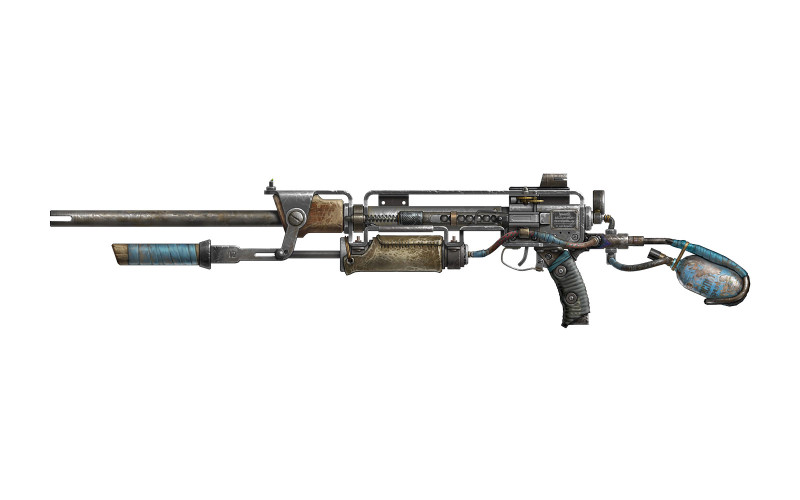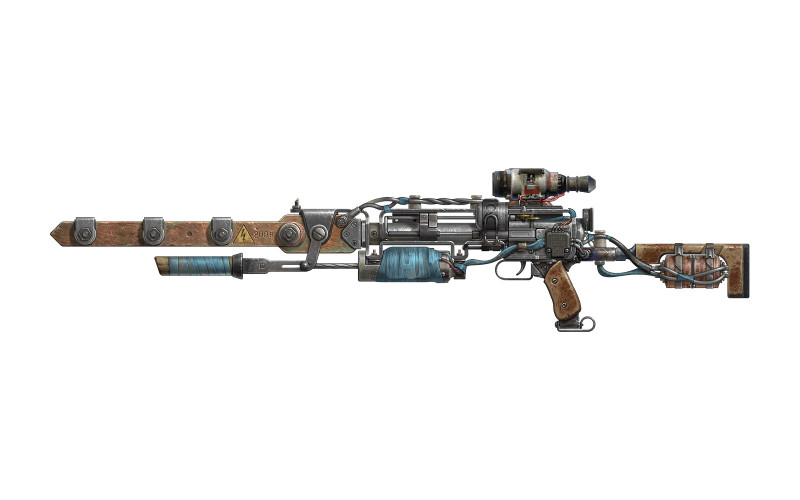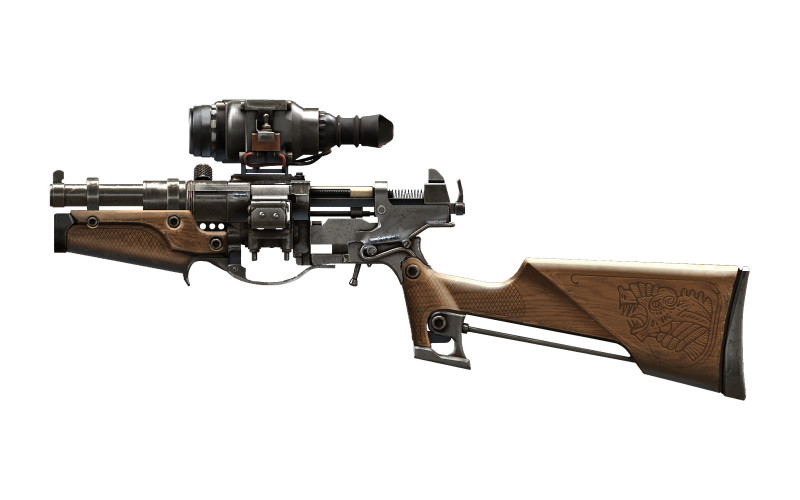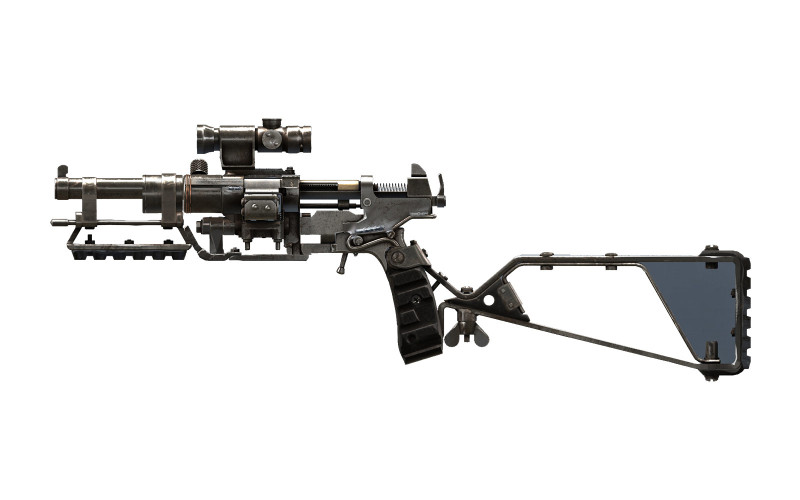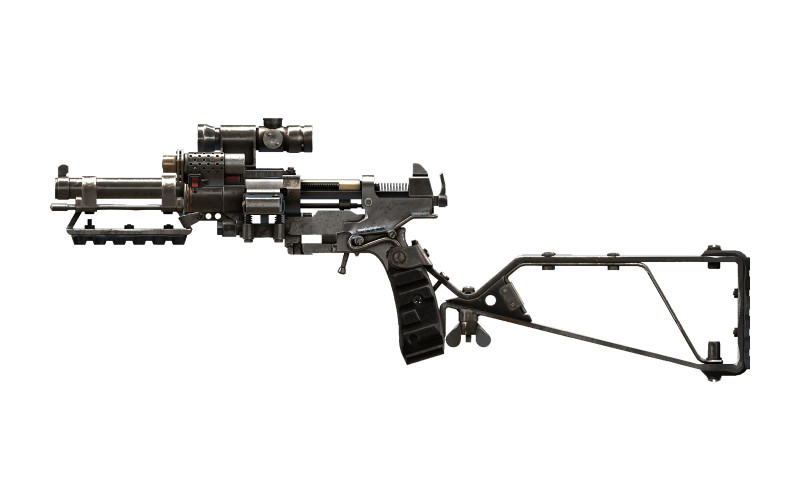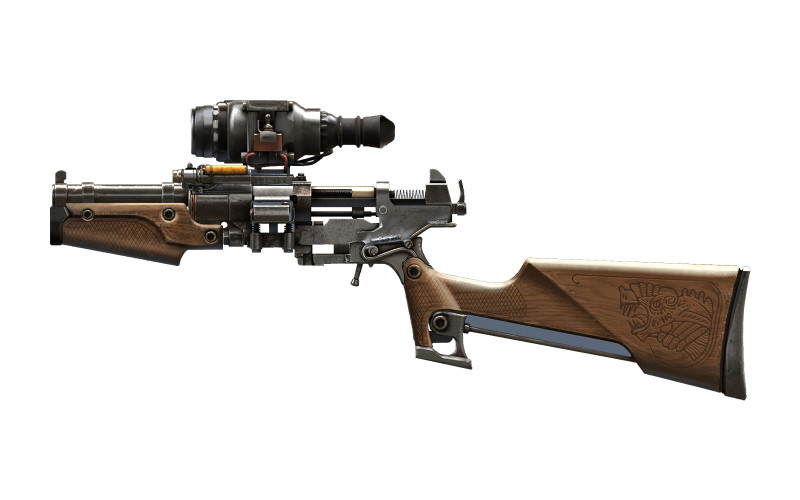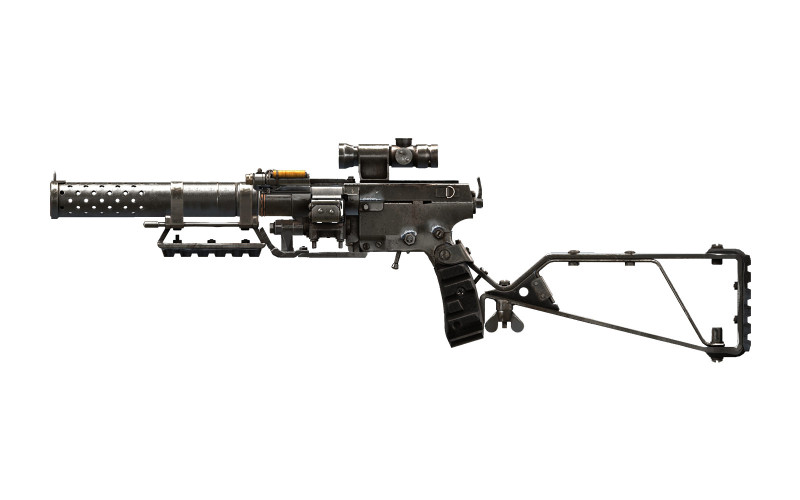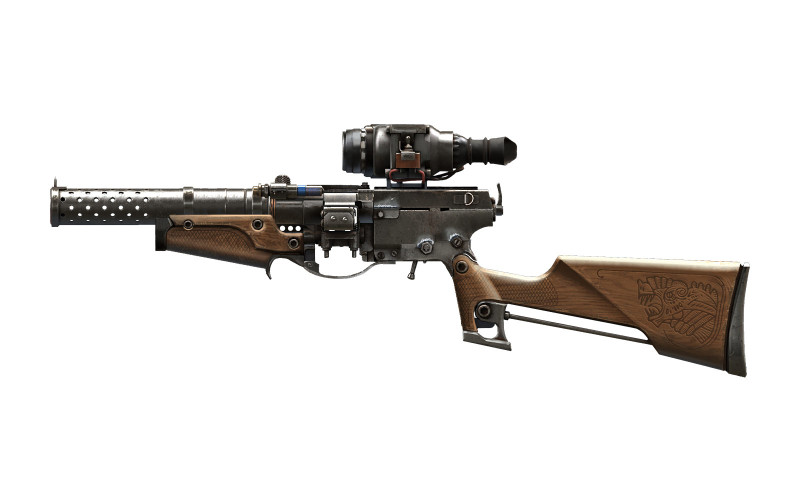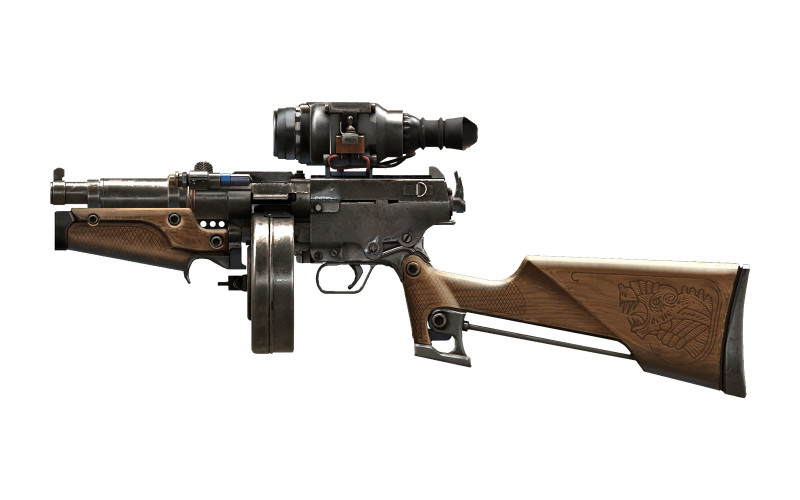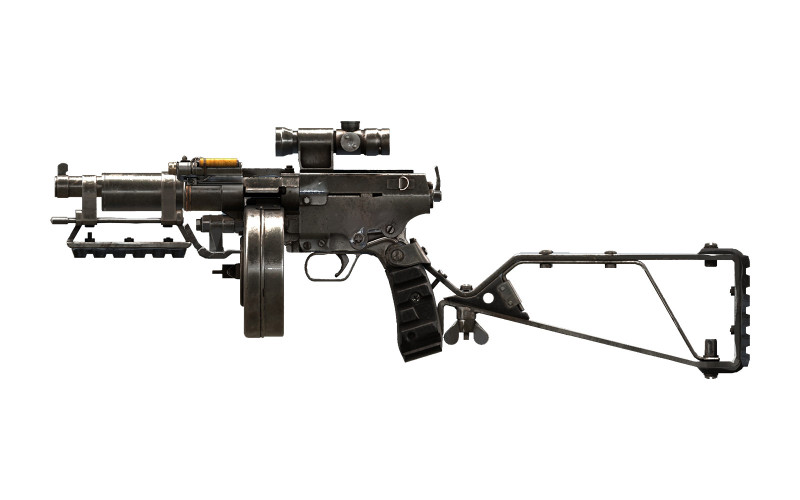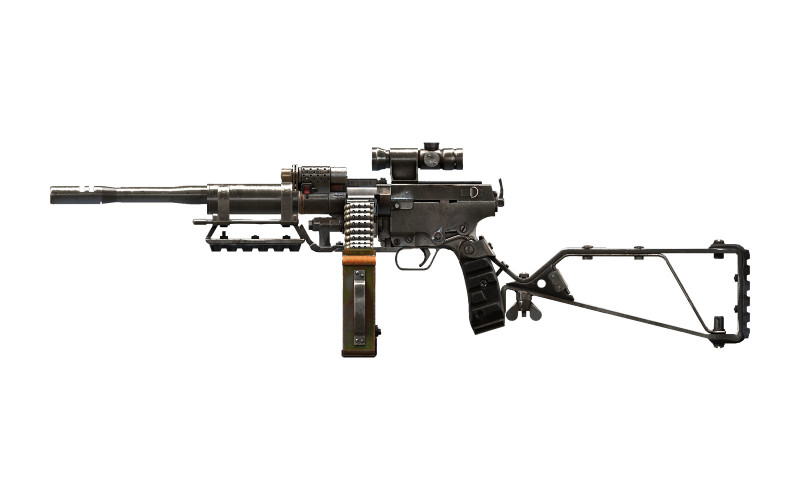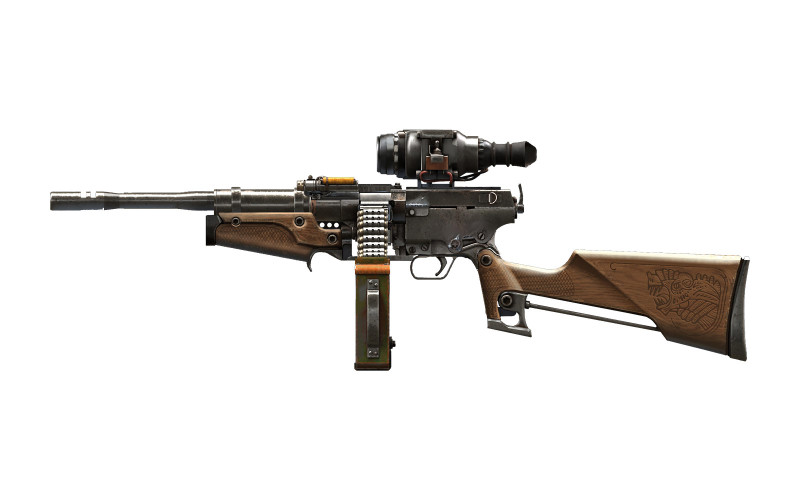

Be the first to get Game Informer’s August Issue! Subscribe Now
Nuclear dread has always hung over Andriy Prokhorov’s head. Growing up in the Soviet Union in the 1970s, the Cold War loomed large. Each week during grade school, teachers walked students through civil defense lessons detailing what to do in the case of a nuclear emergency. Even at a young age, he understood the futility of ducking and covering if a 15-megaton atom bomb dropped.
“It was scary for a seven-year-old kid,” he recalls. “I had nightmares about nuclear war really often.”
As an adult, Prokhorov converted that morbid fascination with nuclear fallout from a nightmare to creative inspiration. Leading teams of talented artists, programmers, and designers across two companies, he helped orchestrate three of the moodiest and most haunting post-apocalyptic interactive experiences in modern gaming.
First came 2007’s S.T.A.L.K.E.R.: Shadow of Chernobyl, an ambitious open-world role-playing shooter from GSC Game World. Shortly after the tumultuous seven-year production wrapped on that project, Prokhorov left to co-found 4A Games. The Kiev-based studio wasted no time making a name for itself with the Metro series.
Based off the eponymous novels from Dmitry Glukhovsky, the series imagines a post-nuclear holocaust Russia where the last remnants of humanity engage in a constant struggle for survival within the maze of the Moscow Metro. Combining the design sensibilities of the Half-Life series with gritty survival elements, the single-player-focused games carved a unique niche in the first-person shooter landscape.
Danger is always right around the corner as players explore dimly lit tunnels roamed by ungodly creatures, patrolled by warring human factions, and haunted by supernatural phenomena. Metro games demand players pay attention to the little things to survive, like manually replacing gas mask filters and charging flashlight batteries. All the while, 4A Games immerses players in a suffocating atmosphere. Both Metro 2033 and Metro: Last Light won widespread praise from critics and sold millions of copies.
When Metro Exodus debuted during the E3 Xbox press conference last year, it surprised and delighted attendees with a gorgeous gameplay sequence. By moving up and out of the Metro tunnels, Exodus promises a more open and varied experience powered by the impressive 4A Engine, a graphical powerhouse that takes advantage of the increased horsepower of high-end PCs, the Xbox One X, and PlayStation 4 Pro. Coming out of the show, hype is at an all-time high for the series, so we traveled to 4A Games’ new headquarters to dive deep into its plans to evolve the series from strictly linear sequences to integrating more open sandbox experiences.
For the third entry in the Metro series, 4A Games originally planned to make an open world in Moscow that connects the vast network of stations together, but the studio wasn’t enthusiastic about staying in the Moscow Metro for another four years.
“After S.T.A.L.K.E.R., we were tired of open world, so we changed the direction of Metro, and after two linear games, we were fed up with tunnels, so we said, ‘Let’s do something else,’” says Prokhorov, who serves as the creative director of Metro Exodus.
During the brainstorming process for alternative approaches, two artists suggested the idea of taking a train trip through post-apocalyptic Russia. The idea instantly resonated with the team, as well as Glukhovsky, who continues to work on the game series even after the conclusion of the book trilogy.
“When the guys came with the general idea, I immediately felt it was mine,” Glukovksy says. “It wasn’t that they were imposing something on me, it was a natural match.”
While Glukovksy started sketching the rough narrative outline, 4A Games dusted off its book of open-world lessons learned during the development of S.T.A.L.K.E.R. At the start, they thought the evolution would be organic, but they soon realized melding the open-ended sensibilities of S.T.A.L.K.E.R. with the narrative-driven, linear experience of Metro was more difficult than originally perceived. The early concepts gave the player a lot of freedom, but 4A felt it completely lost the Metro feel. During the iterative process, they finally settled on a hybrid that retains several linear missions throughout the game, but drops players in large survival sandboxes in between these sequences.
“The balance was quite hard to find, but I think we succeeded,” Prokhorov says. “We like how we made Metro and S.T.A.L.K.E.R. friends with each other.”
The most ambitious project 4A Games has attempted to date, Metro Exodus takes players on a continent-spanning journey. Don’t expect the exodus to be easy, as resources are scarce, the mutants are fierce, and not every human you meet along the way is excited to see you.

The exodus theme of the newest Metro resonates strongly with 4A Games. In recent years, the Kiev-based studio found its beloved country of Ukraine mired in political turmoil, causing the developer to seek asylum elsewhere. First came the Euromaidan protests over the government’s decision to walk away from a European Union agreement in 2013. The fallout from that civil unrest led to the Ukrainian parliament’s decision to remove president Viktor Yanukovych from power. Not long after, Russian president Vladimir Putin ordered the annexation of Crimea, a key strategic Ukrainian territory bordering the Black Sea.
These dangerous circumstances certainly don’t help the recruiting efforts for an independent studio looking to attract talent for its ambitious new project. Rather than grinning and bearing the political uncertainty, the studio made the bold decision to find a new home free from destabilization.
After examining the options available to them, the studio heads settled on Malta, a small, tourism-focused island country located in the Mediterranean Sea just south of Sicily. The country offered incentive-based programs for game development companies, and 4A Games liked that it’s just a three-hour flight from Kiev. Over the course of several months in 2014, the studio organized its exodus, locating a new office on the island, pre-arranging apartments for 34 employees and 17 families, and chartering a private plane to get them all to the island safely. 4A Games still retains its Kiev office, which has about 80 employees, but named the new Malta location its headquarters.
“Dear motherland, this morning we’re leaving you for some time,” Prokhorov wrote on his Facebook page the day of the move. “Not because we don’t love you, but because we have to – otherwise 4A Games will cease to exist – it’s really hard to get investors while we’re at war with [Putin]. We can understand publishers, but our hearts are sorrow and we feel like betrayers, because we’re leaving our country in turmoil. We’re not betrayers, we love you, Ukraine and we’ll have with us a new part of Ukraine in not-so-distant Malta. 4A Games Malta is a Ukrainian company.”
The move paid off. 4A Games found recruiting to be much easier in Malta given its membership in the European Union. Over the course of the next three-and-a-half years, the talent influx diversified the company dramatically. Whereas the original Kiev office only had one person who wasn’t Eastern European, developers from continents spanning the globe now call the Maltese office home. Their contributions are critical to meet the high expectations the studio has for its latest project.

Metro Exodus picks up following the redemption ending of Last Light. When we last saw Artyom, he was prepared to blow the underground military bunker known as D6 into oblivion before the mysterious Dark Ones saved the day by repelling the expansionist-minded Red Line army. The Dark Ones then walked off into the great unknown, but told Artyom one day they will come back.
We rejoin Artyom two years later, and the Dark Ones seem to be the last thing on his mind. He’s convinced he picked up a human radio signal aboveground a while back, and returns to the rusted parking lot of post-nuclear Moscow every day hoping to establish contact. Everyone in the Metro is convinced he’s crazy.
On his journey back from another fruitless communication session, he runs into a pack of watchers, the frightening mutated beasts from previous games. Artyom fights them off with his blade and a shotgun, violently stabbing one in the face as he tries to close a door in retreat, but their numbers prove impossible to repel. As they move in for the kill, suddenly gunfire rings out. A group of Spartan sentries arrive on the scene not a second too late, sparing his life.
They carry Artyom back to the station in a stretcher, and he awakens much later with his wife, Anna, sitting by his side. “Every time you go out there I don’t know if you’ll ever come back,” she says with a scolding tone. “Look, if the world was alive, somebody would have come already. But for all these years nobody did. We’ve had this conversation so many times already. We’re the only survivors.”
In walks Colonel Miller, Artyom’s disapproving father-in-law. We last saw Miller in a wheelchair after getting his feet blown off in the D6 conflict, but an inventive Russian has since outfitted him with mechanical prosthetics. “This s--t has to stop,” he says. “There’s Metro and nothing else, and Metro needs to be defended. Got it?”
The hands-off demo jumps ahead one week to another outdoor scene – Artyom has convinced Anna to accompany him on yet another attempt to establish contact. “More of nothing?” she asks. “Artyom, the only thing we can hear up here is that Geiger counter ticking.”
As they pack up and head back for camp, she further drives her point home. “What good are these fantasies in a silent world?” she asks. “Silent, Artyom – because it’s dead.”
Navigating the dilapidated Moscow ruins on the way back to the station, we see some of the new traversal mechanics in action. With fully modeled hands and feet, Artyom now can squeeze through narrow spaces, slide down slopes, and crawl through small gaps.
They reach a highway littered with abandoned cars, and immediately take cover to stay out of sight as a giant pack of watchers moves past. The winter storm increases to blizzard conditions, dramatically reducing visibility. Artyom hears his bracer alarm go off, indicating it’s time to change his gas mask filter. Suddenly, they hear a sound they haven’t heard in years – a train is running down the railroad track below them.
They run after it hoping to wave down the conductor, and to their right a van drives up and honks to get their attention. The soldiers in the van open the sliding door, and Anna and Artyom jump in. “How did you guys get here?” Anna asks. “Did you see the train?” Their response? A rifle stock to the face.
This early sequence plays out much like classic Metro, with a measured pace, linear space, and focused storytelling. 4A Games says Exodus has several traditional levels like this sprinkled throughout the experience, but in between is when the franchise starts to spread its wings.
4A Games won’t reveal the events surrounding the Spartan Order’s departure from Moscow, but our demo rejoins them as they are barreling down the railroad tracks on a commandeered steam train called the Aurora. A thick fog covers the surrounding region, which appears to be a flooded flatland. When their light finally pierces the fog in front of them, they realize too late that a group of sentries is huddled around a fire on the tracks. They hit the brakes but crash right through it. A gunfight breaks out, but the Spartans make short work of the “old farts” who took exception to their crashing the campfire.
On the horizon, we see a lift bridge that appears to be heavily guarded. Colonel Miller assembles the crew to issue orders and tasks Artyom with gathering intel in the surrounding area. He hands Artyom his trusted map, which has a compass on the front and a notepad on the back that details the story objectives. Keeping to Metro’s tradition of realism, this old clipboard is all players have for navigating these open spaces – no HUD indicators, waypoints, or fast travel to make your life in this barren wasteland easier.
Before Artyom leaves the train, a man hands him a backpack that serves as a portable workshop. It doesn’t come with crafting materials, so players must scavenge the bombed-out buildings and overturned cars to find the items needed to resupply gas mask filters, medkits, bullets, and other invaluable materials.
Since each new region has unique human factions, the “bullets as currency” economy found in the Metro has been replaced with this scavenging system. Various combinations of the two crafting resources – materials and chemicals – can be used to replenish vital supplies on the go. Players can also attach new weapon modifications while out in the open field – no need to visit an outpost to make changes to your loadout. However, you can’t craft military-grade ammunition or repair/upgrade your vital gear with this backpack. For those more involved tasks, you must find one of the many workstations located throughout the world.
Anna accompanies Artyom on this early mission, guiding him toward a nearby church that looks to be inhabited. But from this point forward, players have the freedom to do whatever they want in this sandbox space. If you’d rather head toward the train depot, port, warehouse, or any of the other points of interest on the horizon before tackling the next story beat, that’s your call. Our demoer sticks to the script, following Anna to a boat landing.
Anna instructs Artyom to hop in the small rowboat while she heads toward a nearby antenna to provide overwatch with her sniper rifle. With the settlement’s intentions still unknown, she urges him to refrain from greeting the survivors by immediately opening fire. Artyom oars the rowboat through sheets of drifting ice. Random vibrations on the otherwise glassy surface indicates something dangerous could be lurking in these waters. After rowing to a landing and scavenging some supplies out of a collapsed house, he returns to the water and follows the ominous ringing of church bells.
The church is heavily damaged, with a partially destroyed ceiling and walls, but the settlers have built some new wooden structures in and around it. A man on the dock beckons Artyom forward. “Our holy father Silantius has already started his sermon,” he says. “Just enter the temple and see the light of truth. We are a peaceful lot, so please keep your weapon sheathed. And welcome!” Artyom rows into the building, where the congregation is assembled on both sides of the canal and Silantius pontificates from a platform overhead.
Previous Metro games had three warring factions based on political ideologies that preexisted in the city. None of these have left the underground, so each region in Metro Exodus introduces new indigenous factions. The worshipers gathered in this church believe technology and electronics are to blame for the world’s collapse, and anyone caught using these gadgets from the past is labeled a heretic.
Silantius notices Artyom’s gear and gives him a heretic’s welcome, raising gates around the boat to block him from leaving. With only a matter of seconds before the church’s armed guards descend on his position, his only path forward is a staircase leading up a tower. Reaching the top, he opens the door and is greeted by a woman named Katya and her daughter. She explains they’ve been trapped up there for more than a year. She saw the Aurora approach out the window and says they need passage out of this place. You agree to split up and meet back at the train, where she’ll give you more information about the region. Now it’s up to Artyom to get out of this encampment alive.
This multi-tiered headquarters calls to mind classic Metro combat scenarios. With many avenues of approach, you decide how you want to handle the situation. Fearful of having a heretic in their midst, fanatics will shoot on sight. However, you can avoid combat altogether with some patience and smart non-lethal takedowns.
Whatever approach you take, the game collects statistics on your decisions. But don’t expect a game-pausing presentation that makes a ceremony out of your narrative-altering choice. Given 4A Games’ commitment to realism, the studio wants to disguise this system so players react naturally. “We didn’t want to make it like a game where you’re posed with a scenario that literally asks, ‘Do you want to be good or bad?’” says executive producer Jon Bloch. “We want to see how people play, and then the game reacts to how you play.”
To put it more succinctly, Prokhorov wryly says, “You will get what you deserve.”
Given the segmented nature of the sandboxes in Metro Exodus, you will see how your choices reverberate through the story well before the grand finale.
Our demoer errs on the side of mercy, using a series of non-lethal takedowns on the way to the escape boat. Whatever style of stealth attack you use, 4A Games overhauled the system to create more animation variance. The game now takes into account your weapon, direction of attack, movement speed, and whether you are standing or crouching, resulting in a smorgasbord of brutal takedowns.
The decision to keep his weapon sheathed should play to Artyom’s advantage down the road. Any fanatic he runs into during his travels won’t immediately open fire, especially if Artyom keeps his weapon holstered when approaching them. 4A Games added this option so you can better declare your intent before meeting new people. Holstering your weapon also bolsters your running speed if you need to make a break for it.
On the way back to the Aurora, we see the unsettled water again. This time the threat doesn’t stay underwater. Several large, mutated shrimp crustaceans leap from the water and attack the boat. Artyom fends off their advances with gunfire, but the noise attracts one of the bigger fish in the sea. Out of nowhere, a giant Tsarfish swallows the front of the rowboat, sending Artyom crashing into the frigid water. Artyom can’t swim, but lucky for him a Spartan sentry stationed nearby hears the scuffle and pulls him ashore.
The sandbox spaces in Metro Exodus may not always match the suffocating tension of the tunnels, but this unexpected encounter proves there’s still enough hostility in the rusted, decayed countryside to keep you on your toes. Just as in the Metro’s unforgiving underground, survival on the surface won’t come easy. “The idea was to increase the survival elements in this game because the more open locations encouraged this direction,” Prokhorov says. “It’s probably a little bit more hardcore.” But as with the previous Metro games, Exodus offers difficulty balances for multiple skill levels.
Jumping to the next gameplay sequence, Artyom journeys to a shipyard to recruit an engineer named Crest, who is holed up atop a cargo crane. When we reach his abode, we see the workbench in operation for the first time. At these dedicated crafting stations, you have many more options at your disposal than you do in the field. For instance, you can make military-grade ammo, upgrade your bracer with new items like a compass, replace broken gas mask faceguards, and add looted items to your armor like a bandolier, which lets you carry more ammo. Players may also have to spend some crafting materials on repairing weapons. Each one degrades slightly as it’s used, which is communicated to the player with visual cues like dirt flying off the stock. The guns never break completely, but you may have to contend with occasional bullet stray or a slight hit to your damage output.
Crest’s outpost also includes a bed, which players can use to regain some health or swap the time from day to night or vice versa. Fast-forwarding to nightfall can be a boon for stealth players hoping to infiltrate a location, though you may have to contend with more dangerous beasts once the sun fades past the horizon. Players can advance time and heal up slightly at the many campfires scattered across the regions as well.
Before Artyom ziplines down the tower toward his next objective, Crest hands him a pair of binoculars. Players can use these to mark points of interest in the various regions. After holding your gaze on a location, a question mark appears on your physical map pinpointing that place.
Once Artyom hits the ground, Miller issues a distress call. No one’s heard from Anna, and the last time she was in contact she was still sniping from the antenna. Artyom double-times it to the area, where he sees a crack in the ground that leads to an underground storage space. He finds Anna half-conscious and inhaling toxic fumes, so he quickly puts her gasmask on before venturing into the cramped, darkened space. The walls are lined with bioluminescent mushrooms, and nuclear waste bins are everywhere. Here we meet another of the new enemy types in Metro Exodus: the humanimal. These furry, mutated beasts move like apes, typically travel in packs, and communicate with guttural grunts. They also pack a punch, which Artyom finds out the hard way. A couple unexpected blows to the head cause his gas mask to crack. Since he can’t replace the shield away from a workbench, Artyom improvises and patches the mask with a piece duct tape before he breathes in too much radioactive air. The humanimals continue to pour into the cramped space through any crevice they can find, leading to a frantic showdown.
Given the claustrophobic quarters, dangerous circumstances, and haunting enemies, this sequence also feels more in line with the previous iterations. “We’re still making a Metro game,” Bloch says. “Even in the open areas there are still aspects of that story-driven experience. Maybe it’s not as linear as it’s been in the past, but we still have these mechanics and opportunities to help drive these people through the environments and through the story of the game.”
The linear narrative takes you to many interesting locations in the Russian countryside, but if you just mainline the critical path, 4A says you will miss out on hours of expanded content. But what kind of side-content is awaiting you in the irradiated Russian countryside, exactly?
We sampled one of these offshoot missions when Artyom stumbled across a farmhouse occupied by bandits. Sneaking past some makeshift alarms made from twine and empty aluminum cans, Artyom takes position in the attic and surveys the ground level. Several bandits and a German Shepherd are milling about, and a jail cell is housing two prisoners. Artyom opens the attack by throwing a knife at the only bandit in an elevated position, then drops down to engage the rest of the group.
Here we get our first taste of how the stealth system has evolved in Metro. True to the studio’s philosophy, you still don’t have on-screen indicators that tell you when you are visible. But given negative feedback about its previous stealth systems, 4A Games implemented clever tells that help you understand when you’re about to be spotted. When an enemy is looking your direction and you step out of cover, the music tension still rises, indicating you are in danger of being spotted. Once your cover is blown, the music spikes with the audio equivalent of an exclamation point. Enemies then call out your exact position and this context-sensitive chatter provides a lot more feedback about what the enemy is doing. You can still disappear into darkness, and if you stay out of sight for a while they will cease fire and start searching for you.
Still in the safety of cover, Artyom pulls out his Tihar pneumatic rifle and pumps the gun up for more bullet pressure. Loading an incendiary round into the weapon, he targets a nearby enemy, who screams and writhes in pain as the fire consumes him. The German Shepherd springs into action, knocking Artyom to the ground.
After Artyom fends off the dog and downs several of the bandits, the remaining enemies realize the futility of their resistance and hold their arms up in surrender. Artyom chooses to spare their lives and heads for the jail cell housing two religious fanatics. When he releases the prisoners the screen briefly flashes blue – a subtle tell that your decision feeds into the aforementioned morality system. Thankful for you saving them, one of the fanatics tips you off about a stash of “sinful” tech that the sect confiscated from heretics such as yourself.
This tit-for-tat sequence is one example of how Metro Exodus rolls out side content. The game has no comprehensive quest list, job boards, or quest givers. Instead, players can learn about these locations by eavesdropping on idle chatter, being tipped off by non-player characters you meet, or exploring.
The variety of side content is still the biggest question we have surrounding Metro Exodus. We know you can scavenge for crafting materials, weapons, improved gear and weapon parts. Certain locations have notes, tape recordings, or visions (think the plane crash sequence from Last Light) that tell the backstory of these locations. 4A also says players may cross paths with supernatural phenomena as in the previous games, but wouldn’t speak to whether or not the Dark Ones are involved in the story. Will these tangential experiences inject enough surprise and variety to compel people to explore these sandbox regions? We won’t know until we can spend a considerable amount of time in them.

Artyom’s journey through the irradiated wasteland of Russia in Metro Exodus may be steeped in challenges and setbacks, but obstacles are par for the course when trying to write your own destiny.
The founders of 4A Games has faced its share of improbable challenges chasing their dreams as well. The team learned open-world game design on the fly, endured unrelenting political unrest in Ukraine, and ultimately uprooted its developers’ families to establish a new home in Malta. All along the way, it continues to refine its process and deliver memorable first-person shooters.
With the benefit of a more stable development situation, Metro Exodus builds on the legacy of its predecessors in promising new ways. The new-and-improved 4A engine powering this adventure is impressive, rivaling industry giants like DICE’s Frostbite engine. The studio’s reunion with sandbox spaces has both S.T.A.L.K.E.R. and Metro fans excited, and the powerful E3 presentation has captured the imagination of an even wider audience. But even as the scope of the Metro franchise grows, to 4A Games this is a deeply -personal -project.
“We are making Metro Exodus for ourselves,” Prokhorov says. “We hope that if we like this game, someone else will, too.”
